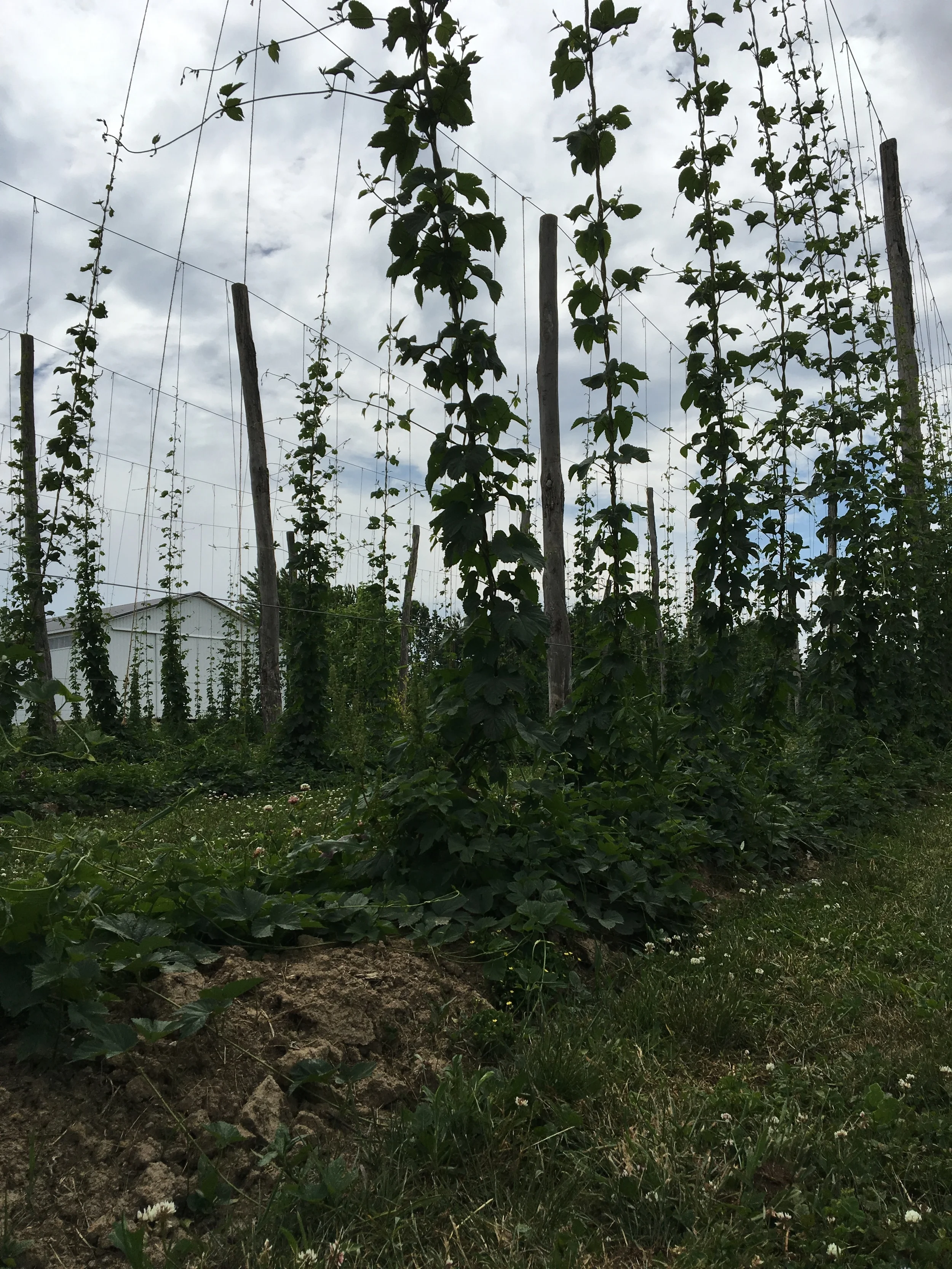FIELD TO MARKET
3 DRYING | The dryer is a self-contained wooden unit measuring 8’ W x 16’ L x 6’H with circulating fans to move the air across the hops, which rest on drying screens. This piece of the processing is very critical. If you dry too quickly with heat above 140 degrees, you degrade the oils (or lupulin) in the cones that give you it’s aroma and value. If you dry too slowly, the material can be begin to degrade, also affecting the quality of chemicals in the flowers that brewers rely on. Moisture readings are taken throughout the 18-24 hour process to ensure the hops are dried to between 8-10% moisture. This allows for the best storage ability. The hops are then sent to the baler.
4 BALER | Dried hop cones are compressed into 50 – 200 pound bales to reduce space requirements until hops are used. There are many different fabricated balers out in the industry, and just need to compress to a safe level as to not damage the oils.
5 COOLER | Until the baled hops can be processed further, they will need to be stored in a cool space between 32-34 degrees. Again, this is to protect the quality of the hop flower and lupulin. Heat equals degradation of the product.
6 HAMMERMILL
7 PELLETIZER
8 PACKAGER
9 LAB TESTING
10 LABELING
11 STORAGE / COOLER
12 MARKET
Below is our process for taking hops from field to market. In other words, this is how we take raw field material and transform it into brewery-preferred hop pellets.
1 FIELD | 20-foot mature hop bine and coir string are cut, releasing them from the top wire trellis system using a scaffolding platform pulled by a tractor. Then, fieldworkers cut the bine and string from the lower wire, which is approximately 2-feet above the ground. The bines are then laid in an organized manner onto a second wagon to be in position to feed into a harvester.
2 HARVEST | The trailer of hop bines is driven to the barn where they will be fed into a stationary harvester. It takes 2 people to unload the trailer and hand the person feeding the machine one bine at a time. You can call it the “Bine Brigade.” Once a bine is hooked into a chain-driven arm, the bine is pulled into the machine, travels through a series of 7 drums with “picking fingers,” which separate the desired hop cones from the leaf and bine compost. The hop cones exit the machine on a conveyor, drop into a container and are immediately placed into a dryer. A person walks around watching the machine to be sure it is working properly. Another person empties the compost into a dump truck to be carried to the compost pile and another empties the cones into dryer racks. It takes a minimum of six people to run the harvester efficiently so that it can clean over 170 bines an hour. Historically, women and children of the farm handpicked hop bines and it would take over an hour to pick one bine. The Wolf harvests in one hour the same amount, which takes 170 hours by hand.
The harvester measures 6’W x 20’L x 12’H with four 3-phase motors, four conveyor belts, and a series of gears and sprockets, weighing 10,000 pounds. We own a Wolf WHE 170 Hopfen Pflumaschine, which means “A hop picking machine.” It was manufactured in Germany by the Dauenhauer Manufacturing Company in 1983 and was used by a retiring Polish hop farmer to harvest his 8-acre hop yard.
